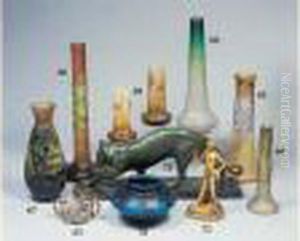Jean Antonin Carles Paintings
Jean Antonin Carles was a prominent French sculptor born in 1851 in Paris, France. He was known for his mastery in sculpting figures, ornaments, and architectural decorations that captured the essence of French art at the turn of the 20th century. Carles' work was characterized by a blend of classical tradition and emerging modernist tendencies, reflecting the artistic transitions of his time.
Carles received his artistic training at the École des Beaux-Arts in Paris, where he studied under renowned sculptors such as François Jouffroy and Alexandre Falguière. This education grounded him in the academic traditions of French sculpture, but he was also influenced by the naturalism and expressiveness of the emerging Art Nouveau movement. Throughout his career, Carles exhibited a remarkable ability to adapt and innovate, which allowed him to remain relevant as artistic tastes evolved.
He achieved considerable acclaim in his lifetime, receiving numerous commissions for public monuments and decorative sculptures. Among his well-known works are contributions to the architectural beauty of the Paris Opera House and participation in the decoration of the Petit Palais, Paris. Carles was also responsible for creating memorials and statues that commemorated historical figures and events, cementing his reputation as a sculptor of national significance.
Despite his success, Jean Antonin Carles' work became somewhat overshadowed by the avant-garde movements of the early 20th century, as the focus of the art world shifted towards abstraction and conceptual art. However, his sculptures continue to be appreciated for their craftsmanship, elegance, and the way they capture the spirit of an era straddling the traditional and the modern.
Carles' legacy is preserved in the collections of many French museums and in the public spaces of Paris and beyond, where his sculptures serve as enduring symbols of the Belle Époque. He died in 1919, leaving behind a body of work that continues to be studied and admired for its artistic merit and historical significance.

